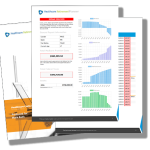What does reasonable care mean in the legal space?What does reasonable care mean in the legal space?
What Does Reasonable Care Mean in the Legal Space?
In legal contexts, understanding the term “reasonable care” is crucial, particularly when discussing liability and negligence. The Munley Law Glossary offers clear insights into such legal terminologies, providing essential information for those navigating legal disputes. Reasonable care is a fundamental concept in personal injury law, medical malpractice, and many other legal areas, helping determine whether a party acted appropriately under the circumstances. Let’s explore what reasonable care means, its role in the legal system, and how it affects legal cases.
Defining Reasonable Care
Reasonable care refers to the degree of caution and concern an ordinary, prudent person would exercise in a given situation to avoid causing harm to others. It sets the standard for what is considered acceptable behavior to prevent accidents or injuries. In legal cases, whether someone exercised reasonable care often influences the outcome of negligence claims.
For instance, if a person fails to act with reasonable care and their actions result in harm to another, they may be considered negligent and, therefore, legally responsible for any damages caused. The concept does not demand perfection but requires individuals to act as a reasonably prudent person would in the same situation.
The Role of Reasonable Care in Negligence Claims
Negligence claims often hinge on whether a party failed to exercise reasonable care. In legal terms, negligence occurs when a person or entity breaches a duty of care owed to another person, leading to an injury or damage. Establishing negligence typically involves four elements:
- Duty of Care: The defendant owed a duty to the plaintiff to act with reasonable care.
- Breach of Duty: The defendant breached this duty by failing to exercise reasonable care.
- Causation: The breach directly caused the injury or damage.
- Damages: The plaintiff suffered actual harm as a result.
In such cases, the court evaluates whether the defendant’s actions were consistent with what a reasonable person would do under similar circumstances. If not, the defendant may be held liable for the plaintiff’s injuries or losses.
Reasonable Care in Different Legal Contexts
The application of reasonable care varies depending on the situation and the legal field in which it is used. Below are some common legal contexts where the standard of reasonable care plays a significant role:
Personal Injury Law: In personal injury cases, such as car accidents or slip-and-fall incidents, individuals must exercise reasonable care to avoid harming others. For example, a driver must follow traffic rules and drive safely to prevent accidents. If a driver fails to do so, they may be found negligent for not exercising reasonable care.
Medical Malpractice: In healthcare settings, medical professionals are held to a higher standard of care due to their specialized training. Reasonable care in this context means providing medical treatment consistent with what a competent healthcare provider would deliver under similar circumstances. If a doctor fails to meet this standard, it could be grounds for a medical malpractice lawsuit.
Premises Liability: Property owners are generally required to maintain safe conditions on their premises. If a visitor is injured due to a hazardous condition that the owner knew or should have known about, the owner may be considered negligent for failing to exercise reasonable care in maintaining the property.
Product Liability: Manufacturers and sellers must ensure their products are safe for use. If a product causes injury due to a defect or lack of proper warnings, the manufacturer may be liable for not exercising reasonable care in the design, production, or labeling of the product.
Determining Reasonable Care: Key Factors Considered
Determining whether reasonable care was exercised often involves assessing several factors. The following considerations may influence the court’s evaluation:
Foreseeability of Harm: The likelihood that a particular action or inaction could cause harm to others is a key factor. If the risk of harm was foreseeable, a person would be expected to take precautions to prevent it.
Seriousness of Potential Harm: The severity of potential harm is taken into account. If the consequences of not taking precautions could be severe, a higher degree of care may be required.
Burden of Taking Precautions: Courts may also consider the effort and cost associated with taking precautions. If taking a particular precaution is easy and inexpensive, failing to do so may be deemed unreasonable.
Common Practices: The standard of care can be influenced by what is commonly accepted as reasonable behavior in a specific field or profession. For instance, safety protocols in the construction industry may be used as a benchmark to determine whether reasonable care was taken.
Reasonable Care vs. Ordinary Negligence and Gross Negligence
It is essential to distinguish between reasonable care, ordinary negligence, and gross negligence, as these terms have different legal implications:
Ordinary Negligence: This occurs when a person fails to exercise the level of care expected of a reasonable person under the same circumstances, leading to unintended harm.
Gross Negligence: Gross negligence refers to a more severe lack of care, involving reckless disregard for the safety of others. It goes beyond failing to exercise reasonable care and is often associated with willful misconduct or extreme indifference to the risk of harm.
Understanding these distinctions is important because they can affect the type of damages awarded in a legal case. In some jurisdictions, cases involving gross negligence may allow for punitive damages, which are intended to punish the wrongdoer rather than just compensate the victim.
